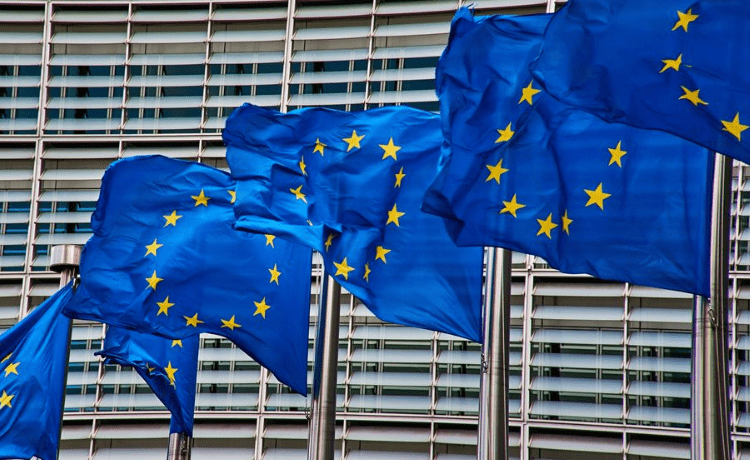The European Union Space Strategy for Security and Defence (SSSD) has recently been unveiled by the European Commission and the European External Action Service (EEAS), led by the High Representative of the European Union for Foreign Affairs and Security Policy.
Published on March 10, 2023, the strategy is a significant milestone in response to the growing recognition of space as a strategic domain within the EU. Building upon the foundation laid by the 2022 Strategic Compass, where EU leaders acknowledged the vital importance of space, the SSSD sets forth a comprehensive framework for addressing security and defence challenges in this domain.
The strategy aims to take action to protect the EU’s space assets, defend its interests, and deter hostile activities in space while simultaneously maximising the use of space for security and defence purposes. Thus, it not only safeguards crucial space assets but also harnesses the potential of space technology to enhance the EU’s security and defence capabilities.
Context
The release of this strategy comes at a pivotal time, slightly more than a year after a cyberattack against Viasat’s KA-SAT satellite inflicted significant damage on hundreds of terminals across EU soil. This attack, attributed to Russian military intelligence, disrupted satellite internet connections across Europe just one hour before Russia’s invasion of Ukraine. While the primary objective of the attack was believed to be the Ukrainian military, its impact extended beyond the intended targets. Personal and commercial internet users, as well as wind farms all over Europe, experienced disruptions in their satellite internet connections. The incident revealed the EU’s lack of protection and preparedness to defend against such cyber threats. It also underscored the evolving nature of warfare, with cyber attacks on space assets becoming an integral part of military strategies. Against this backdrop, the EU SSSD was adopted as a response to address the apparent gaps and vulnerabilities.
Key pillars
The SSSD focuses on key pillars to guide its objectives and actions. These pillars include:
-Ensuring a shared understanding of space threats.
-Enhancing the resilience and protection of space systems and services in the EU.
-Strengthening the collective ability of the EU to respond to attacks and threats.
-Enhancing the use of space for security and defence.
–Fostering global partnerships.
Additionally, the EU aims to enhance its technological sovereignty by reducing dependencies and securing supply chains, supporting synergies between space and defence, and improving skills in the defence and space industries. Through these measures, the EU strives to safeguard its space assets, defend its interests, and strengthen its security and defence capabilities in an increasingly interconnected world.
Enhancing the use of space for security and defence
As part of the SSSD, the pillar dedicated to enhancing the use of space for security and defence emerges as a vital component. This pillar encompasses various plans aimed at maximising the potential of space technologies and services to strengthen security, improve defence capabilities, and inform decision-making processes. In this section, we explore the concrete initiatives proposed within this pillar and their significance in promoting the uptake and utilisation of space data in the realm of security and defence.
Pilot projects
The SSSD introduces two pilot projects aimed at the delivery of initial Space Domain Awareness (SDA) services and the development of a new Earth observation governmental service as part of the Copernicus evolution.
First, the Commission, in collaboration with the High Representative, strives to start a pilot project that will deliver initial SDA services by the end of 2024. This pilot will provide critical support to EU response efforts and explore connections with the Space Surveillance and Tracking (SST) component of the EU Space Programme.
Second, in line with supporting autonomous decision-making and action, the Commission is actively progressing towards the gradual implementation of a new Copernicus governmental service. This service, starting with a pilot, will leverage the complementary roles of SatCen and the European Union Agency for the Space Programme (EUSPA) to deliver a fully reliable and continuously available situational awareness service.
Hence, these initiatives seek to improve space data collection, analysis, and dissemination, ultimately enhancing situational awareness and decision-making capabilities.
Connecting space, defence, and security
One of the strategy’s primary objectives is to promote improved connectivity between the space, defence, and security sectors at the EU level. This initiative aims to foster synergies and cross-fertilisation, particularly in the field of research and development. By combining the expertise and resources of these domains, innovative solutions can be effectively harnessed to address security challenges. In line with this objective, the SSSD seeks to encourage collaborative efforts between start-ups in the areas of space, security, and defence.
This report was published in Groundsatation Space
If you want to read the full article, go here:

